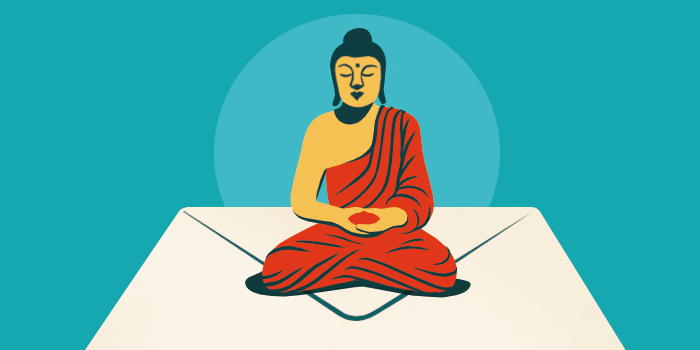What do Zen Buddhists practice?

Three Zen practitioners sit zazen, their tradition’s most iconic practice, on a sesshin retreat in France. | Godong / Alamy Stock Photo
Of the many ways to practice Zen Buddhism, perhaps the most iconic is zazen, which literally means “sitting Zen” but is often referred to as “Zen meditation.” In zazen, practitioners sit on a cushion in a formalized posture with a straight back, eyes half open, and legs crossed onto the opposite thigh in what is called the full-lotus position. (For those who cannot sit in full-lotus, Zen Buddhists endorse several alternatives, including meditating seated in a chair.)
Zazen is often taught as a goalless practice in which there is nothing to achieve; “just sitting” is in itself an expression of an already awakened mind. Dogen, the 13th-century founder of the Soto school of Japanese Zen, believed that a person practicing zazen is, in that moment, the Buddha himself, because the very act of sitting manifests the enlightenment mind that is who we really are.
Others believe that Zen has a distinct goal—awakening—and that direct effort is the only way to attain it. In the Rinzai school of Japanese Zen, practice may focus on answering koans. Koans are enigmatic or paradoxical questions or statements about reality that cannot be understood with the conceptual mind. Zen students may engage with these conundrums as part of a set curriculum that includes such well-known koans as What is the sound of one hand clapping? Guided by a teacher, the practitioner moves through stages of realization. A koan is ultimately about the practitioner: the biggest koan is how to live a fully awakened life.
For many people from East Asian cultures, Zen plays an especially important role in helping families express their continued love and respect for their ancestors—departed relatives who are in the afterlife awaiting rebirth. Many homes in Japan have small altars called butsudan with photographs of deceased relatives, memorial tablets, and offerings of flowers, candles, and food. Each August, people from across Japan head home for Obon, the festival of the dead, when deceased relatives are said to return from the afterlife for the day. Obon is not a morbid occasion but a time of community and celebration because everyone, Buddhist teaching holds, will achieve enlightenment someday.
Zen is also widely practiced through the arts. Traditions such as the tea ceremony, ikebana (flower arrangement), and calligraphy require meditative concentration and are known for inducing a kind of calm and bridging the perceived gap between internal experience and external reality. In the tea ceremony, practitioners perform precise, ritualized movements while “giving” beauty, order, and sustenance to their guests; folding a napkin just so is for the benefit of others first and then for oneself. For this reason, tea practitioners often say that “tea and Zen are one.” For most Zen practitioners, all activities—from chanting to bathing to cooking—are considered Zen practice, with no particular activity elevated over others.

Tricycle is more than a magazine
Gain access to the best in sprititual film, our growing collection of e-books, and monthly talks, plus our 25-year archive
Subscribe now